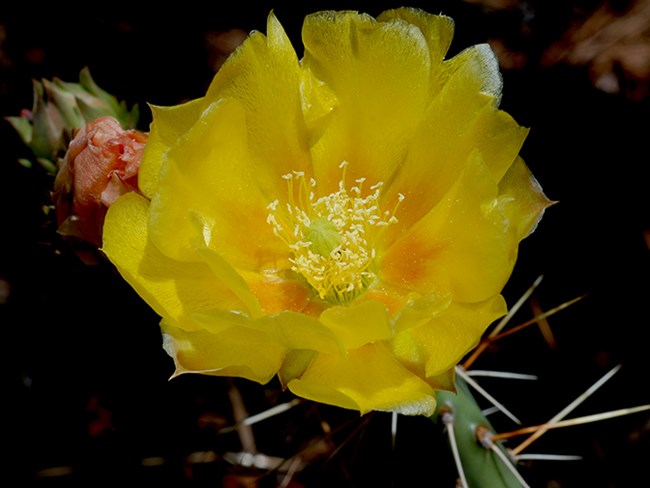
Photo by Sally King Flowers most often yellow but sometimes pink or reddish. Low growing cactus with big pads. Blooms in early summer. Provided important food source for Ancestral Pueblo people. Tends to cross-pollinate and create great diversity within the genus. 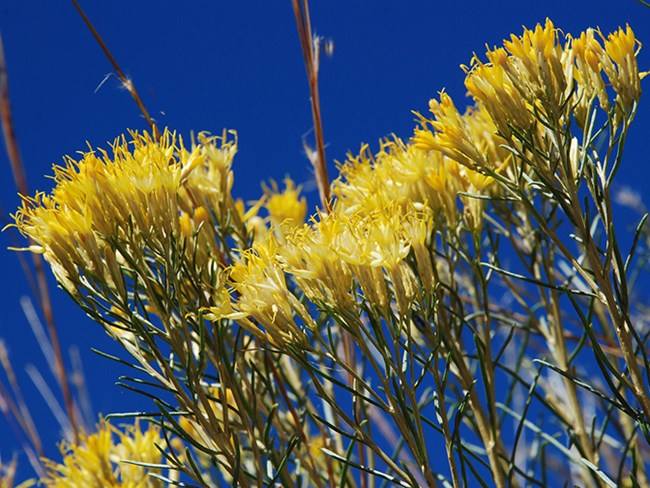
Photo by Sally King Also called Rabbitbrush. Medium height bush. Very common in the piñon-juniper woodland and Frijoles Canyon. Abundant blooms in late summer through fall. 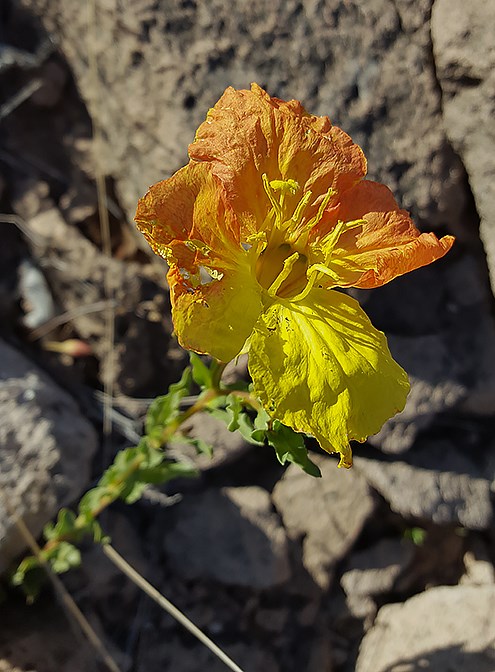
Photo by Sally King Often seen along the entrance road or on Hwy 4. Mid-summer bloomer. Flowers turn pinkish or orange with age. 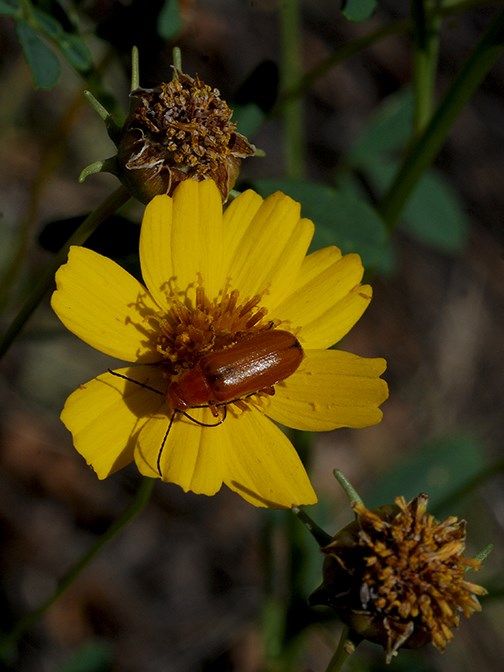
Photo by Sally King Very common in the piñon-juniper woodland. Blooms mid to late summer. Thin elongated leaves. 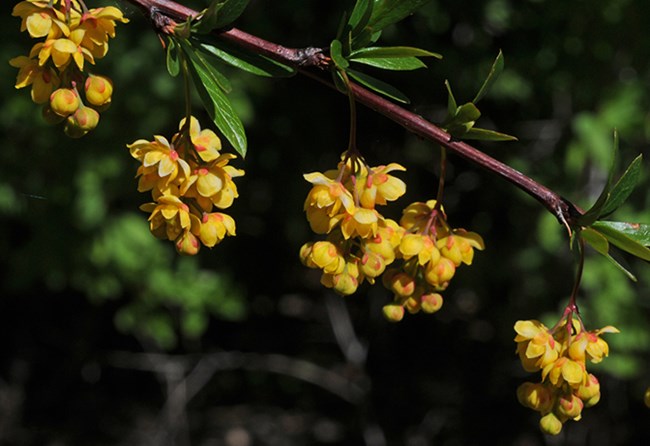
Photo by Sally King Spiny, low spindly bush. Flowers in late spring followed by reddish purple berries in late summer. 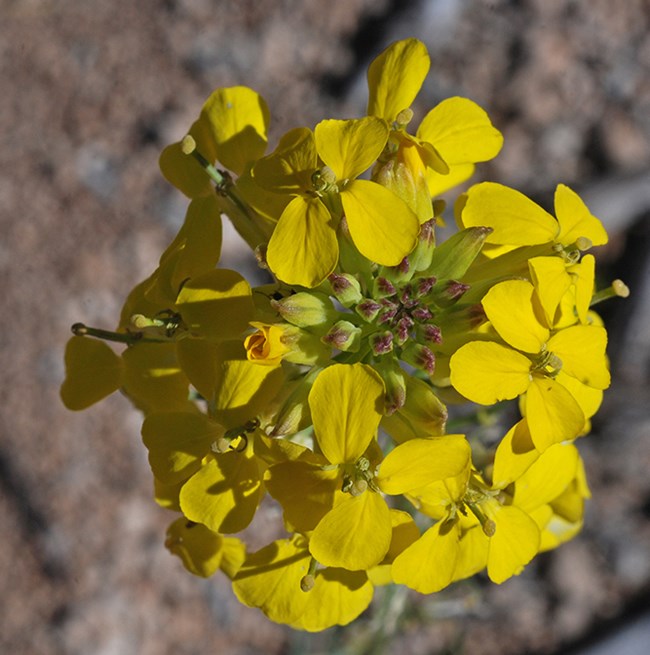
Photo by Sally King Early to mid summer bloomer. Common in the canyons and in the piñon-juniper woodland. 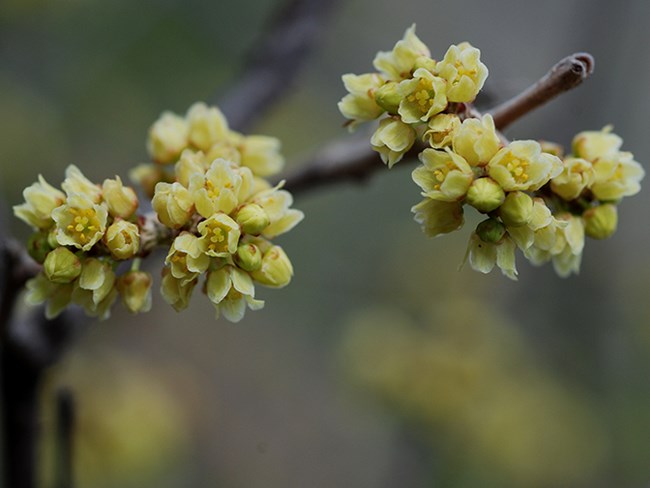
Photo by Sally King Also called Skunkbush or Lemonade Berry. Pale yellow blooms in mid to late spring followed by hairy red berries. Small mounding bush found in canyons and on mesas within the park. Berries can be made into a drink that tastes a lot like lemonade. 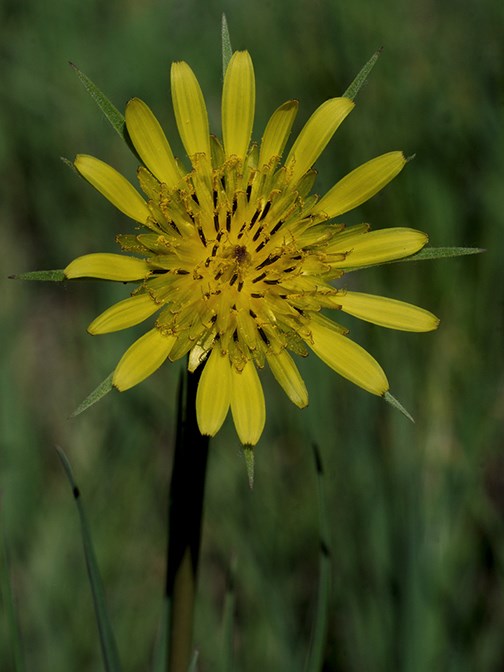
Photo by Sally King Also known as oyster plant. Yellow flower in mid to late summer is followed by a large seed head similar to a dandelion. Non-native plant is found in riparian and mesa areas within the park. 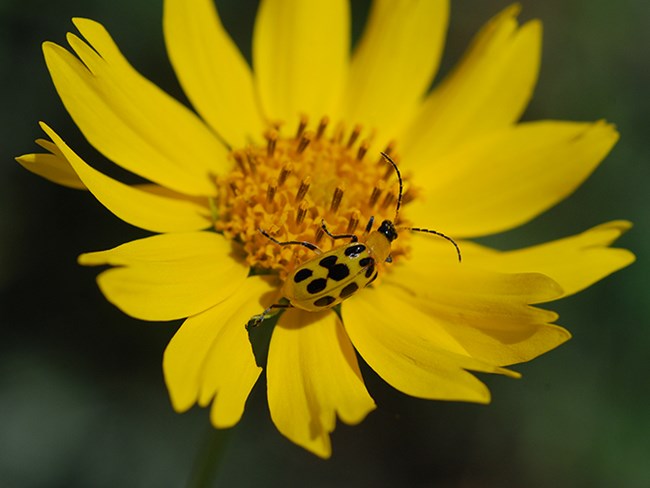
Photo by Sally King Also called Cowpen Daisy. Late summer to early fall bloomer. Common in the canyons and on the mesas. 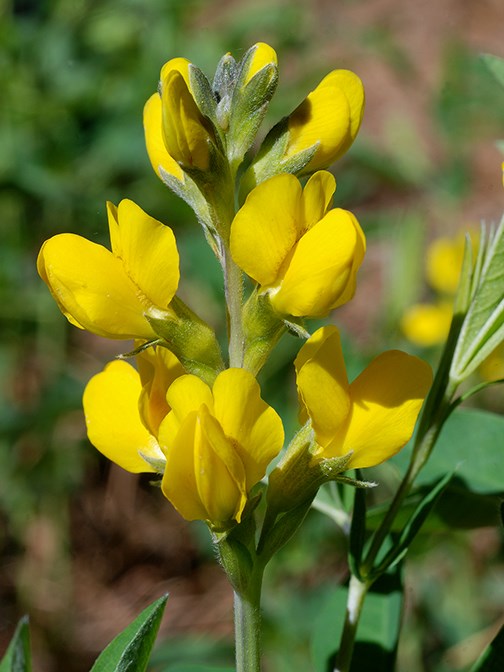
Photo by Sally King BIG GOLDEN PEA (Thermopsis pinetorum) 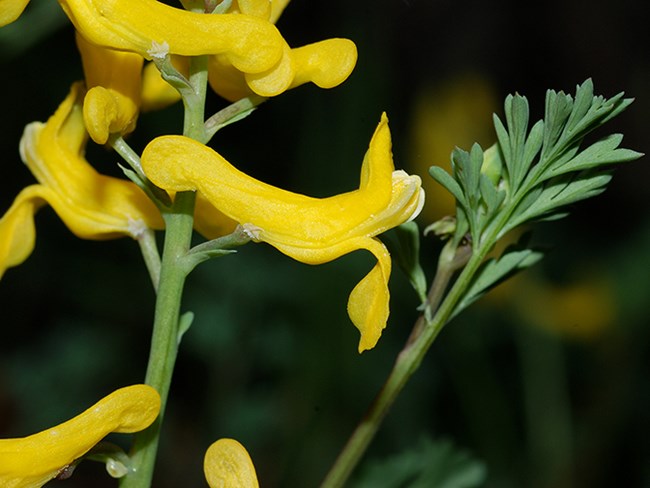
Photo by Sally King Early spring flower. Likes disturbed soil. Can be found in the canyons and along the Rio Grande. 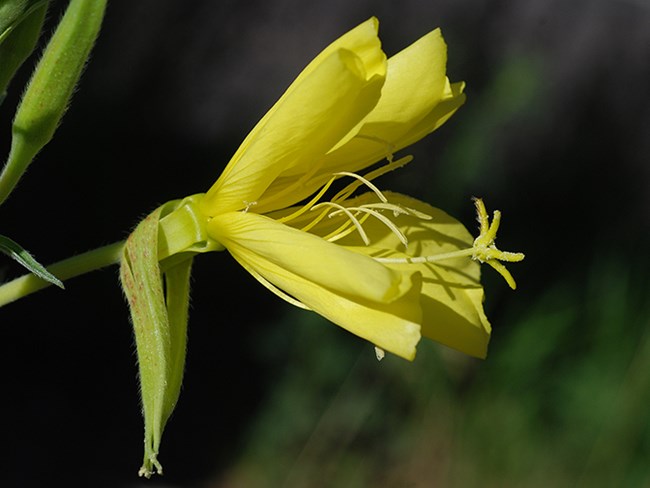
Photo by Sally King Blooms in mid to late summer. Found in disturbed soils such as along trails or roads. 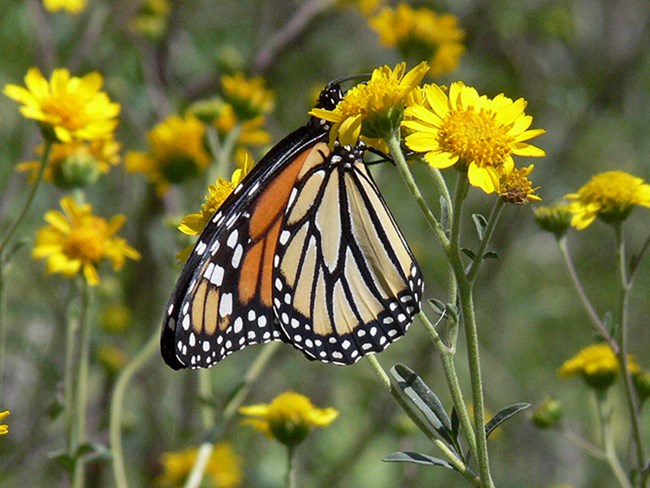
Photo by Sally King Blooms in late summer. Found in most areas of the park except high elevation. 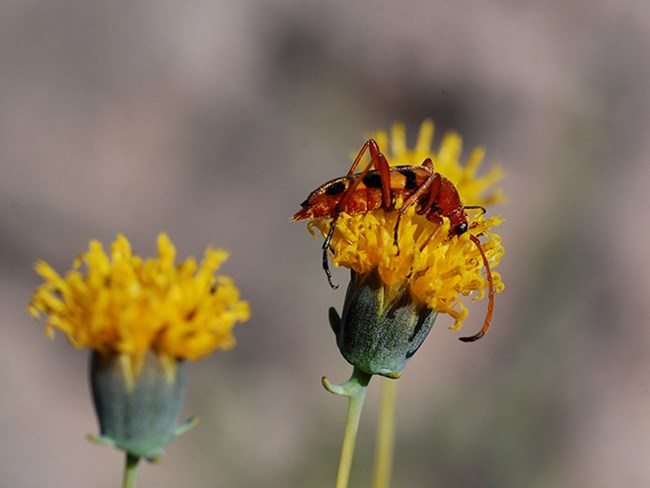
Photo by Sally King Also called Navajo Tea. Blooms in late summer and continues into autumn. Found in the piñon-juniper woodland and can be seen along the trails in Frijoles Canyon. 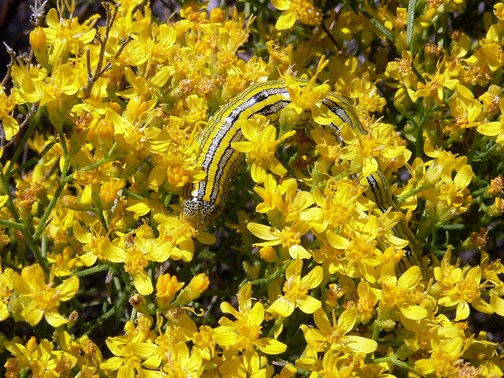
Photo by Sally King Blooms in late summer and continues into early fall. Found in dry, rocky canyons such as Frijoles Canyon. 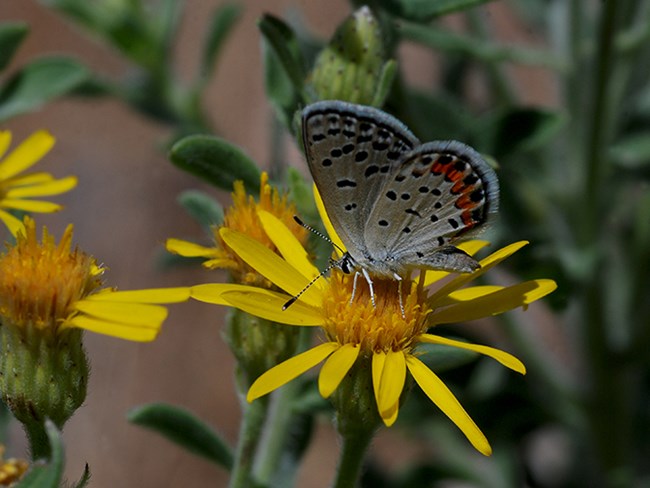
Photo by Sally King Blooms in late summer and continues into autumn. Common in the piñon-juniper woodland and in Frijoles Canyon. 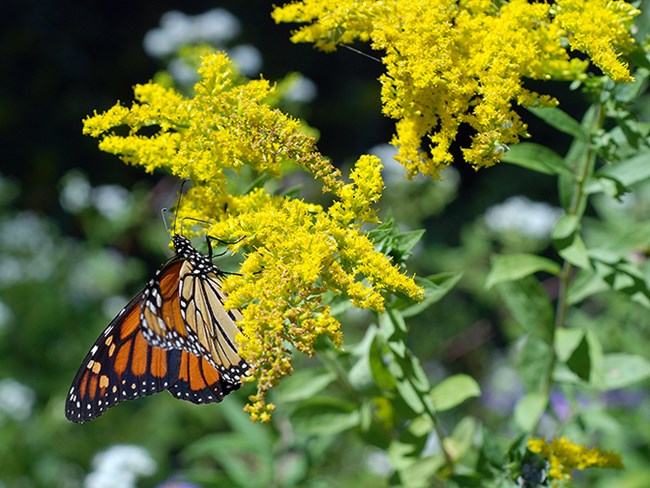
Photo by Sally King Blooms in mid to late summer. Found from the piñon-juniper woodland and higher elevations. Many species that are difficult to tell apart. 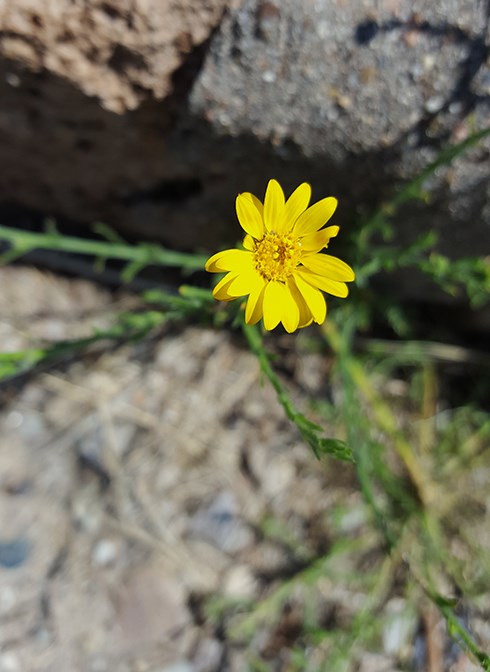
Photo by Sally King Blooms mid to late summer. Common in the piñon-juniper woodland and in Frijoles Canyon. Looks similar to Golden Aster but leaves are very different. 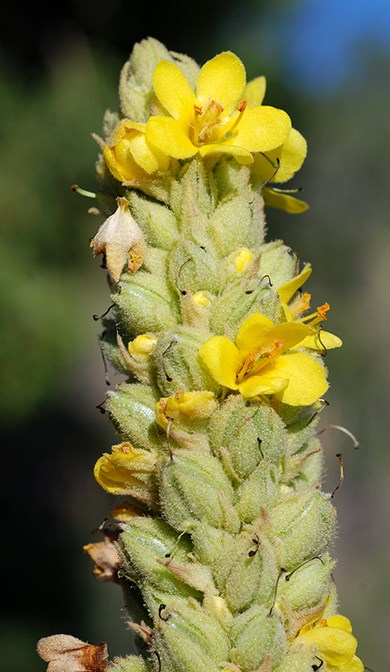
Photo by Sally King MULLEIN (Verbascum thapsus) |
Last updated: April 28, 2025
